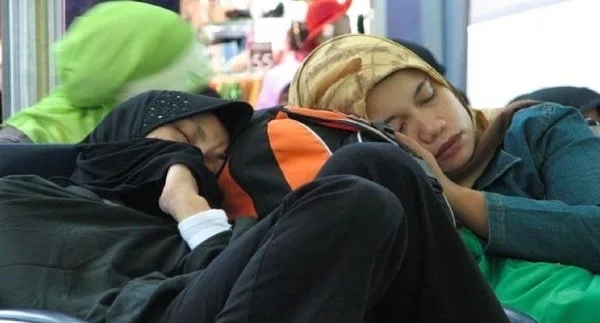In the remote northern stretches of Kazakhstan, nestled within the Akmola Region, lies the sleepy village of Kalachi. Until recently, this farming settlement was almost completely unknown to the world—a place where life moved slowly, crops were grown in the harsh climate, and residents lived in quiet obscurity. That is, until people started falling asleep. Not just for a nap. Not for a restful night’s sleep. But for days at a time—sometimes even a week—without warning, often in the middle of their daily routines. Entire families would go to bed and not wake up for days. Children would collapse at school. Elderly people would black out while cooking or walking. Drivers passed out behind the wheel. Between 2013 and 2015, this bizarre epidemic of mysterious, uncontrollable sleep turned Kalachi from a forgotten village into one of the most mystifying public health enigmas of the 21st century. The locals called it the “Sleepy Hollow” syndrome. Journalists called it a real-life Sleeping Beauty curse. Scientists struggled to explain it. Conspiracy theories flourished. Was it radiation? Chemical warfare? Something stranger? This is the true and unsettling story of the village that slept for 100 years—not literally, but collectively, and in ways that no one, to this day, fully understands.
The First Signs: Falling Asleep Without Warning
The strange symptoms began quietly in March 2013, when a handful of residents reported feeling sudden fatigue. But soon, the number of people collapsing into long, inexplicable slumber skyrocketed. Over the next two years, more than 100 villagers—nearly 25% of the population—experienced the mysterious “sleeping sickness.” Victims would suddenly feel dizzy, disoriented, and then pass out. Some would remain unconscious for several hours. Others were unresponsive for up to six days. When they woke up, they were often confused, forgetful, or even hallucinating. Some patients reported seeing monsters, talking to ghosts, or feeling like time had stopped. Others experienced violent mood swings, delirium, or temporary memory loss.
Common Symptoms Reported
- Sudden onset of fatigue: Often occurring without any preamble, the fatigue could hit at any time of the day.
- Loss of consciousness: This could last for a few hours to several days, with no apparent pattern.
- Temporary paralysis: Some individuals reported an inability to move upon waking.
- Hallucinations and confusion upon waking: These were vivid and often disturbing, leaving lasting impressions on the victims.
- Headaches, dizziness, and nausea: Common post-awakening symptoms that added to the distress.
- Long-term cognitive and emotional changes: Many reported a lingering sense of unease and altered mental states long after the episodes.
The victims ranged from young children to the elderly, and there seemed to be no clear pattern—some people were affected multiple times, while others never experienced it at all.
Kalachi and Krasnogorsk: The Nuclear Shadow
One of the first things investigators noted was Kalachi’s proximity to a ghost town named Krasnogorsk, located just a few kilometers away. Krasnogorsk was once a Soviet uranium mining town, operating from the 1960s to the early 1990s. When the USSR collapsed, the mine shut down, and the town was abandoned overnight, leaving behind decaying buildings, rusting equipment, and radioactive waste sealed deep underground.
Given Kalachi’s closeness to this site, many suspected that radiation leakage from the uranium mine might be causing the sleep epidemic. After all, radioactive exposure is known to cause fatigue, cognitive decline, and neurological damage. But here’s the twist: when scientists tested the air, soil, and water—including radiation levels—they found nothing out of the ordinary. Radiation levels in Kalachi were actually lower than in downtown Paris. The uranium mine, sealed for decades, didn’t appear to be leaking at all.
Theories and Dead Ends
With radiation ruled out, other theories took its place—some scientific, others speculative.
1. Toxic Fumes from the Mine
Some scientists believed that when wind shifted direction, it may have drawn toxic gases like carbon monoxide or hydrocarbons from deep within the abandoned mine shafts into Kalachi. These gases, accumulating in homes and schools, could potentially induce unconsciousness and confusion. This was one of the most accepted theories—except for the fact that many victims fell asleep outdoors, and no elevated gas concentrations were found in most affected areas.
2. Mass Psychogenic Illness (Hysteria)
Some neurologists speculated that this was a case of mass psychogenic illness—a form of collective stress response or psychosomatic reaction that spreads through a population under intense anxiety. While this may explain some cases, it fails to account for the length of the sleep, the biological symptoms, and the fact that children as young as 5 were affected—sometimes in isolation.
3. Water or Mold Contamination
Investigators also tested for fungal toxins, black mold, and waterborne contaminants. While Kalachi’s infrastructure was old, no unusual or consistent pathogens were found. Some suspected narcolepsy-like triggers or rare environmental allergens, but nothing could explain the full spectrum of symptoms.
4. Government Cover-up or Military Experimentation
Locals, distrustful of official reports, suspected something more sinister: secret experiments, Soviet-era toxins, or even bioweapon testing gone wrong. However, no evidence has ever been presented to support these claims.
5. Unexplored Neurological Conditions
An emerging theory considers the possibility of an undiagnosed neurological condition. Researchers in neurology suggest that a rare disorder, possibly genetic, could manifest under specific environmental stressors, though no genetic markers have been identified to support this yet.
Government Response: Confusion and Evacuation
As international media picked up the story, Kazakhstan’s government scrambled to respond. Officials launched multiple investigations, including:
- Radiological and chemical tests: To rule out any toxic substances.
- Psychological assessments: To understand if stress or panic might be contributing.
- Air and soil analysis: To detect any environmental pollutants.
- Neurological scans of the affected individuals: To look for any underlying brain abnormalities.
None produced a definitive answer. In 2015, faced with increasing public fear and no clear resolution, the government began relocating Kalachi’s residents. Homes were demolished, and people were moved to nearby villages or cities. Kalachi, once home to over 600 people, now has a dwindling population of around 100. Those who stayed claim the episodes have mostly stopped—though some say it still happens now and then, quietly, without media attention.
The Personal Accounts: Voices from Kalachi
To truly understand the impact of this phenomenon, it’s essential to hear directly from those who lived it. Many residents, like 55-year-old Olga, describe waking up with no memory of the days lost. “I was in the kitchen one moment, and then I was in the hospital,” she recalls. “It felt like a dream, but my family was terrified.”
Viktor, a local farmer, shares a similar story. “I was out in the fields, and the next thing I knew, I was in a bed, surrounded by doctors. It’s like time just skipped.” These personal accounts highlight not just the physical confusion but the emotional toll of living with such uncertainty.
The Impact on Daily Life
Residents reported drastic changes in their daily routines. Schools struggled to maintain regular classes, businesses operated sporadically, and social gatherings dwindled as fear gripped the community. The unpredictability of the episodes forced villagers to adapt to a new norm, one where vigilance became a part of everyday life.
A Closer Look at the Psychological Impact
The psychological impact on residents cannot be overstated. Imagine the anxiety of not knowing when, where, or if you might suddenly fall asleep for days. Many villagers developed chronic anxiety, fearing the next episode. Children, especially, struggled with the unpredictability, impacting their education and social development. Schools implemented flexible schedules, and teachers had to adapt to students missing days without warning.
Coping Mechanisms and Community Support
The community’s response played a crucial role in managing the crisis. Neighbors checked on each other regularly, and informal support networks emerged. These grassroots efforts provided emotional support and practical help, like ensuring someone was always available to care for children if parents were affected.
Scientific Investigations: Digging Deeper
While initial investigations focused on environmental and chemical causes, some researchers turned to neurology and sleep science. Dr. Sergey Bokhan, a leading neurologist, conducted extensive studies on the brain activity of affected individuals. His team used electroencephalograms (EEGs) to monitor brain waves during sleep episodes. They found irregular patterns, similar to those seen in coma patients, but could not determine the trigger.
Advanced Neuroimaging Techniques
Recent studies have employed more advanced neuroimaging techniques such as functional MRI (fMRI) to explore brain function during and after episodes. These studies aim to identify any unusual neural activity that might provide clues to the underlying cause, although results remain inconclusive.
The Role of Environmental Factors
Although no single environmental factor has been definitively linked to the sleep episodes, the harsh climate and aging infrastructure might play a role. Kalachi faces extreme weather, with temperatures ranging from -40°C in winter to +40°C in summer. This, coupled with outdated heating and ventilation systems, could exacerbate any underlying issues.
Infrastructure Challenges
The village’s infrastructure, long neglected, may have contributed to the problems. Poor ventilation in homes could have intensified the effects of any potential toxins, while the lack of modern medical facilities delayed diagnosis and treatment.
Why It Still Haunts Us
There’s something deeply disturbing about the loss of control over consciousness. The idea that you could be walking down the road one moment and then wake up a week later in a hospital bed, not knowing what happened—it touches on our most primal fears. Kalachi’s story isn’t just about science or mystery. It’s about how fragile our awareness truly is. How easily the human body—and mind—can be shut off, without reason or warning.
The Human Desire for Answers
The enduring mystery of Kalachi continues to captivate because it challenges our understanding of the human body and its vulnerabilities. It underscores the limits of modern science and the need for ongoing research into unexplained phenomena.
Lessons Learned: Preparedness and Resilience
Kalachi’s experience has underscored the importance of community resilience and preparedness. Villagers developed informal support networks, checking on each other regularly. Local leaders organized emergency response drills, ensuring that everyone knew how to react should someone suddenly fall asleep again. These grassroots efforts highlight the power of community in the face of the unknown.
Building Resilience
Practical steps were taken to increase resilience, such as establishing communication lines with nearby medical facilities and ensuring that basic supplies were always available. These measures helped the community cope with the uncertainty and provided a model for other regions facing similar challenges.
The Broader Implications for Public Health
Kalachi’s situation serves as a stark reminder of the challenges in addressing public health mysteries. It illustrates the need for international collaboration, as some experts believe similar phenomena could occur elsewhere. The case has also prompted discussions on improving rural healthcare infrastructure, ensuring rapid response capabilities in isolated communities.
The Importance of Cross-Disciplinary Research
Addressing such complex health issues requires input from various scientific fields, including neurology, environmental science, and psychology. Collaborative research efforts can lead to a more comprehensive understanding of such phenomena and better preparedness for future incidents.
Continuing the Search for Answers
Despite the passage of time, the quest for answers continues. Researchers remain intrigued by Kalachi’s mystery and are hopeful that future technological advancements will provide the means to uncover the truth behind the phenomenon.
Potential Avenues for Future Research
- Genetic studies: Understanding if there is a hereditary component that predisposes certain individuals to the condition.
- Longitudinal studies: Monitoring affected individuals over time to assess any long-term health consequences.
- International collaboration: Engaging with global experts to pool knowledge and resources.
Kalachi may never have made the news were it not for this bizarre phenomenon. But for a brief moment in time, it became the epicenter of one of the most unresolved public health mysteries of our time. A village where nearly a quarter of the population would suddenly fall into deep sleep—not once, but again and again—with no consistent trigger, no lasting cure, and no conclusive diagnosis. It’s a reminder that even in our age of satellites and supercomputers, the world still holds mysteries science cannot easily explain. Kalachi is a ghost village now, but the question it raises continues to linger: What if it happens again?




